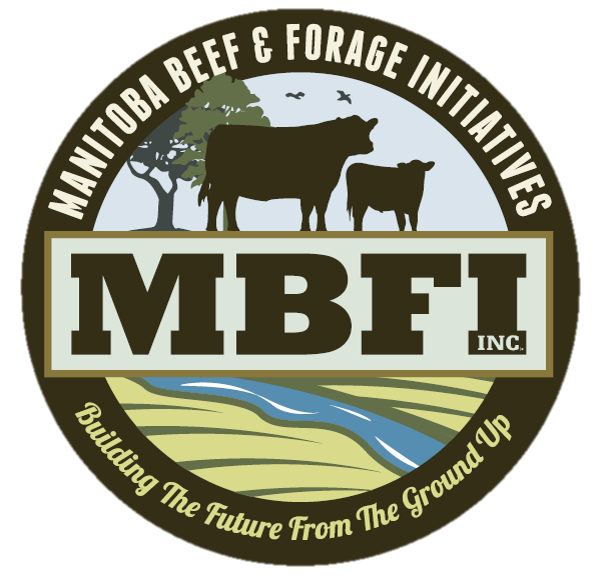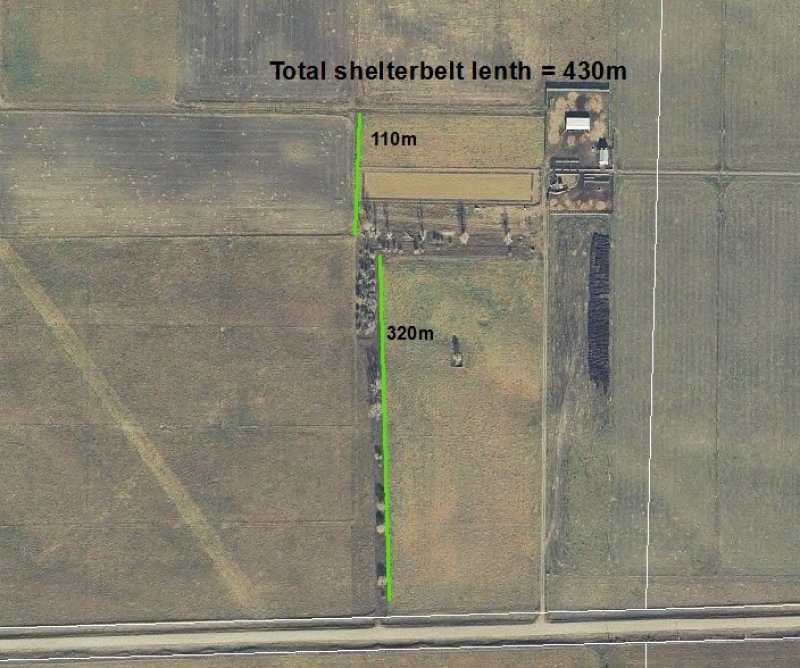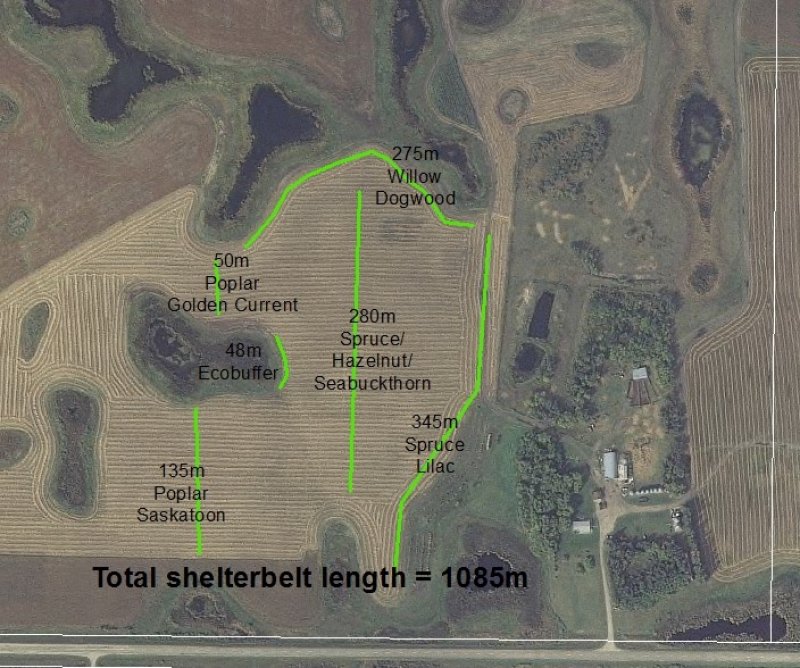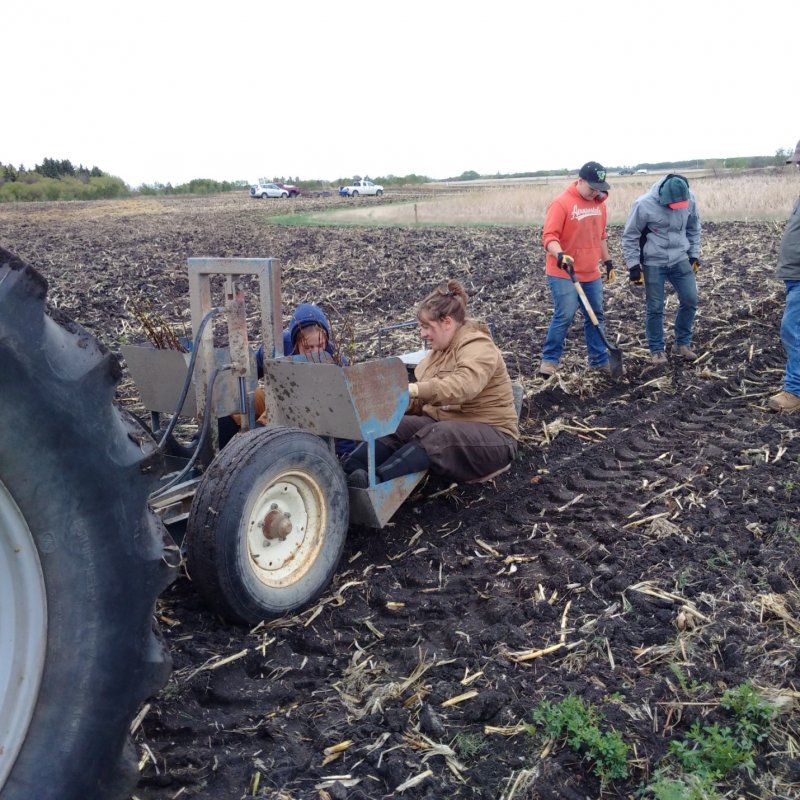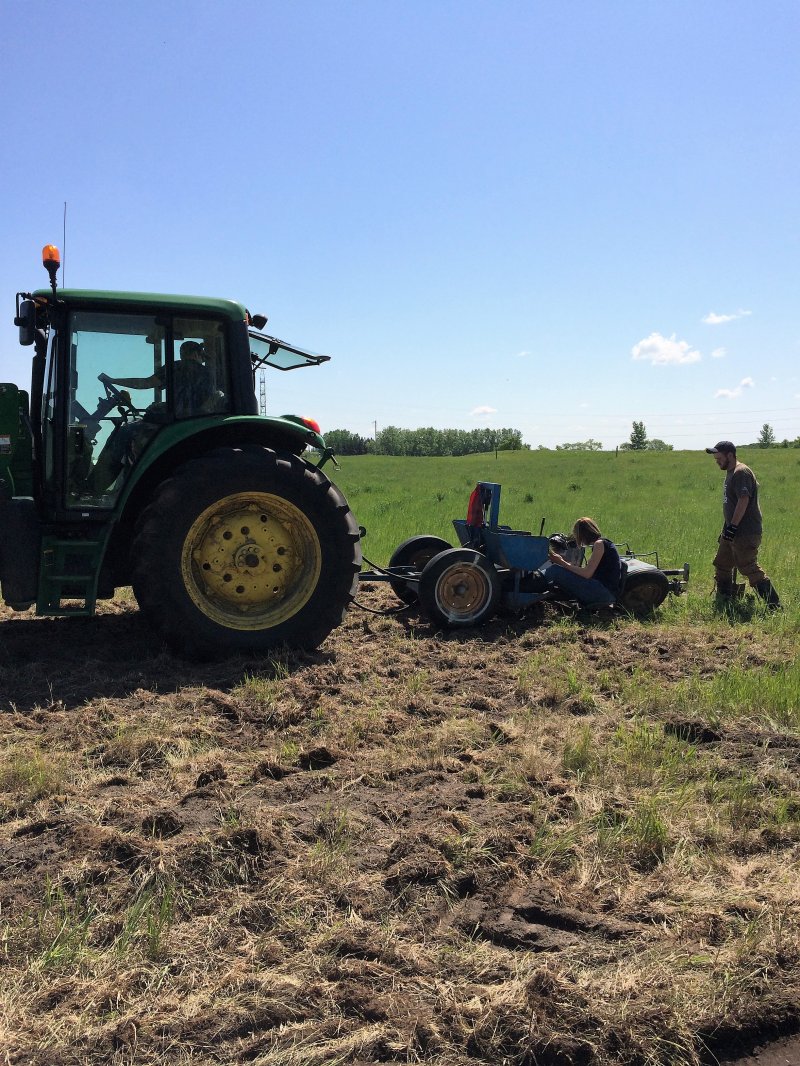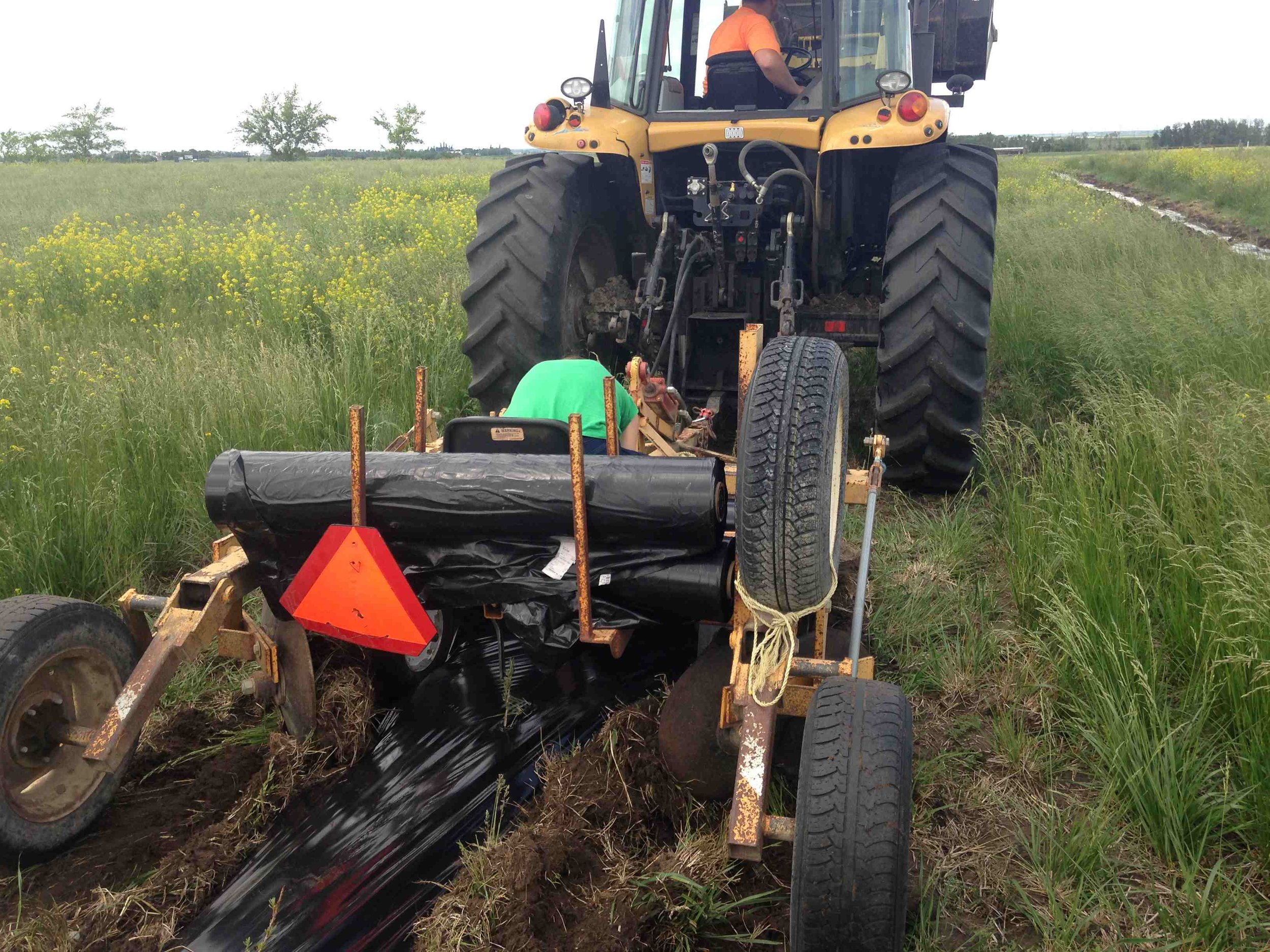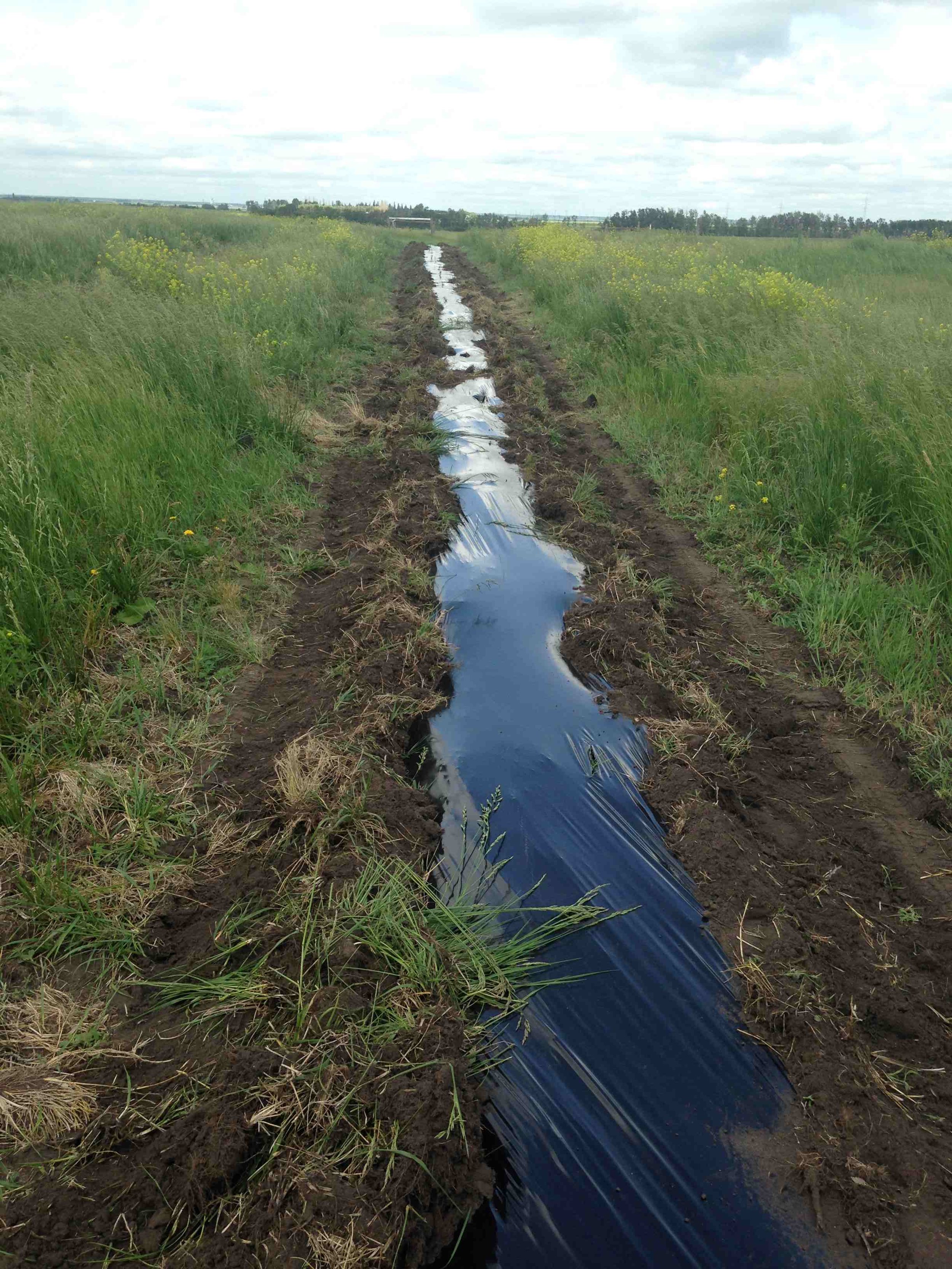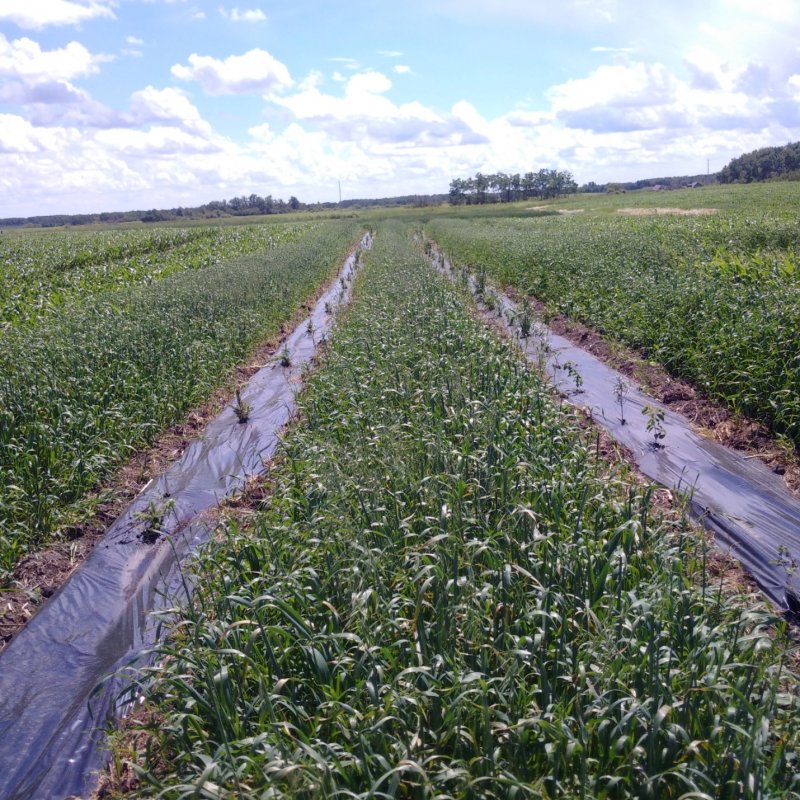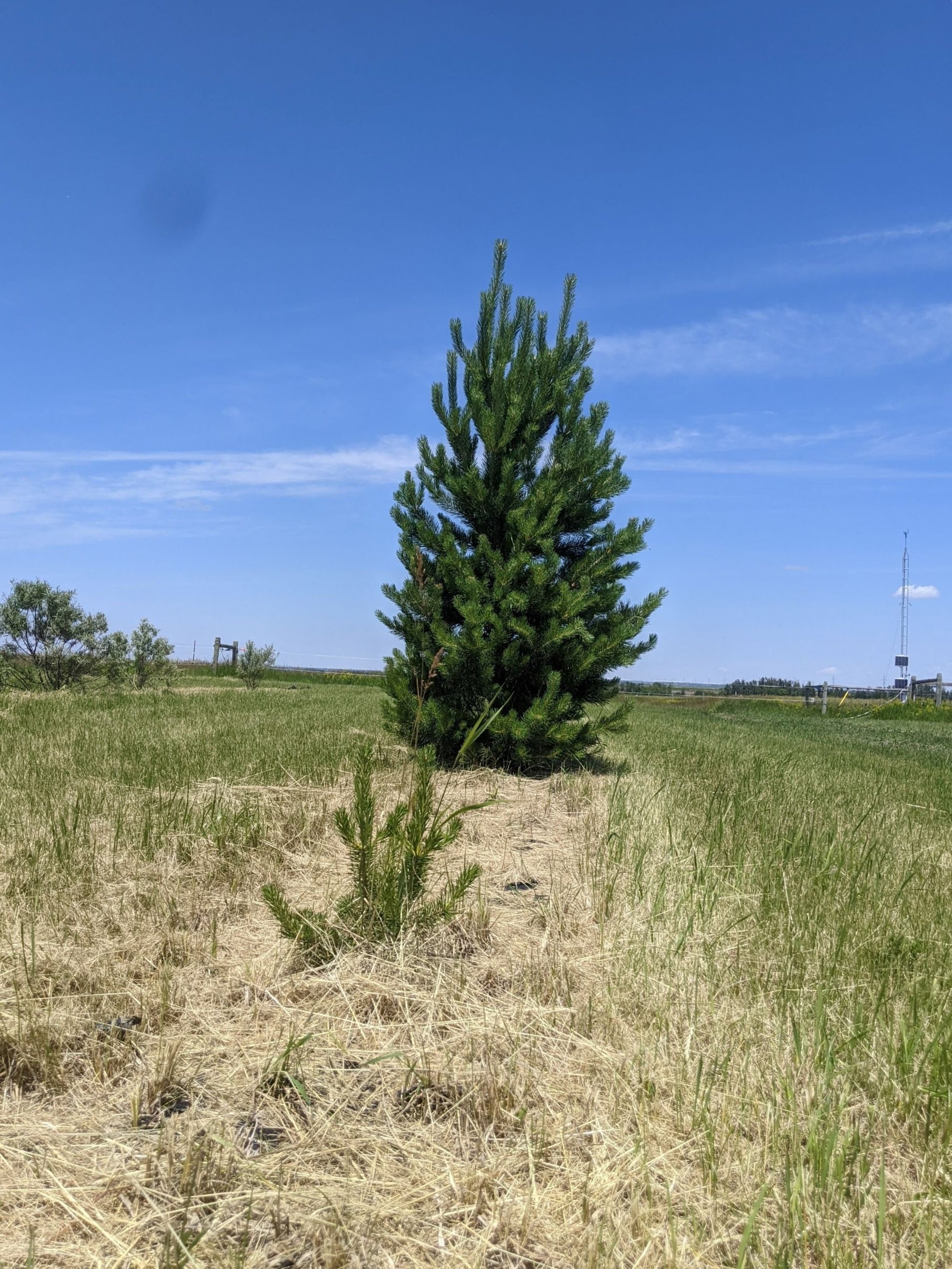Back to Research & Demonstration
Demonstration of different shelterbelt designs for improved extensive grazing systems and biodiversity
Project Details
Project Lead: Kim Wolfe (Manitoba Agriculture)
Collaborators: Upper Assiniboine River Conservation District
Years: 2016 - 2017
Project Status: Complete
Funding & In-Kind Support: Growing Forward II
Location: Johnson Farm & Brookdale Farm
Scope: Case Study
Keywords: Habitat Biodiversity, Climate Resilience
Approach
Two types of shelterbelt designs are explored.
A variety of tree species are planted using a twin-row design.
An Eco-Buffer shelterbelt is a multiple row, dense arrangement of native trees and shrubs.
Key Findings
There was high mortality of trees planted in 2016. More trees were planted in 2017.
Shelterbelts require watering, weeding, and mowing maintenance for many years following planting.
Full Reports:
Related Projects at MBFI:
Industry Resources:
Shelterbelts: Design guidelines for farmyard, field, roadside, livestock, wildlife, and riparian buffer plantings on the prairies - Agriculture and Agri-Food Canada
Shelterbelt Design Tool - Agriculture and Agri-Food Canada
Eco-Buffers: An alternative agroforestry design - Agriculture and Agri-Food Canada
Find your local Watershed District for more information on planting shelterbelts in your area
